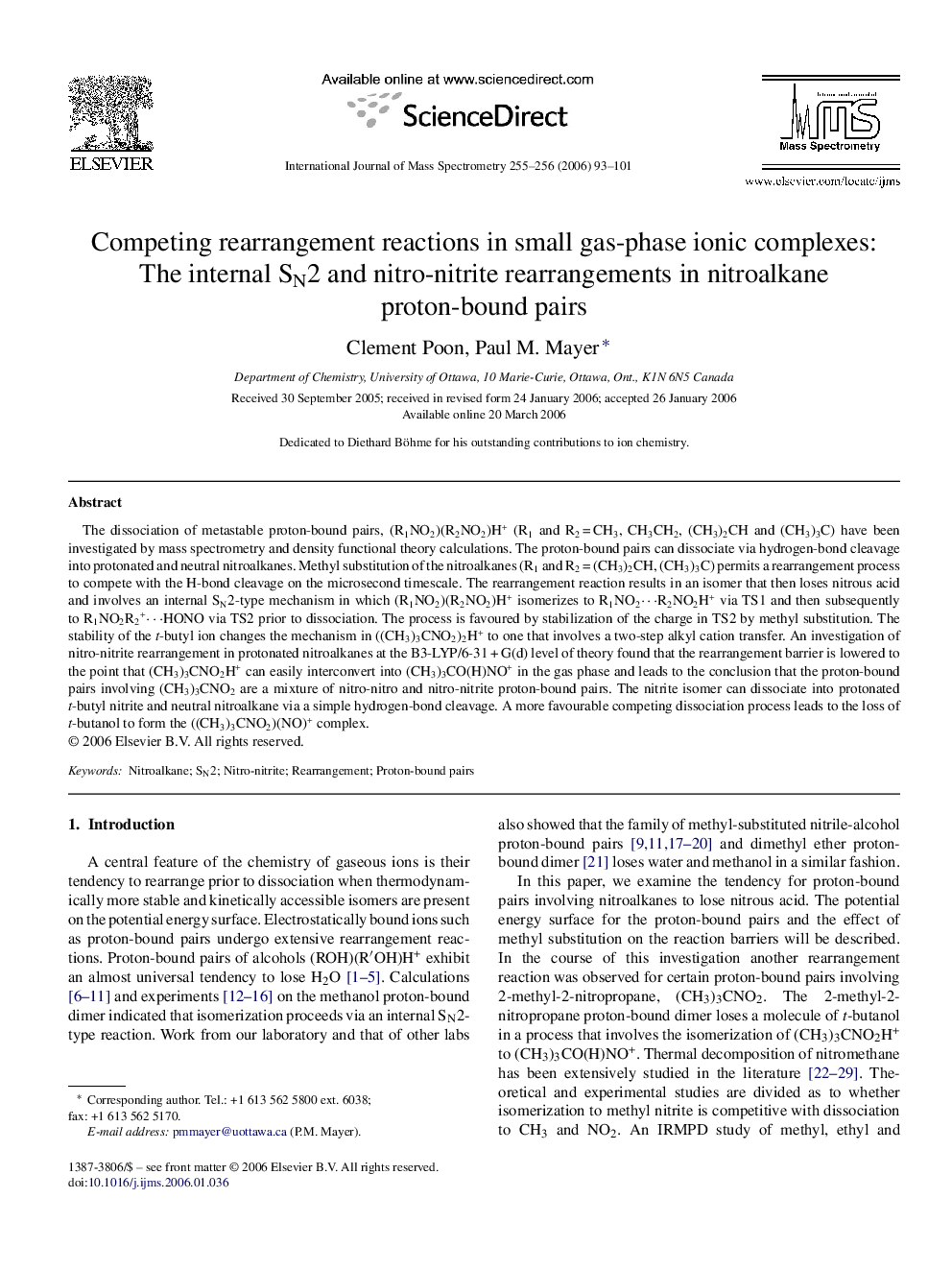| کد مقاله | کد نشریه | سال انتشار | مقاله انگلیسی | نسخه تمام متن |
|---|---|---|---|---|
| 1194727 | 1492384 | 2006 | 9 صفحه PDF | دانلود رایگان |
عنوان انگلیسی مقاله ISI
Competing rearrangement reactions in small gas-phase ionic complexes: The internal SN2 and nitro-nitrite rearrangements in nitroalkane proton-bound pairs
دانلود مقاله + سفارش ترجمه
دانلود مقاله ISI انگلیسی
رایگان برای ایرانیان
موضوعات مرتبط
مهندسی و علوم پایه
شیمی
شیمی آنالیزی یا شیمی تجزیه
پیش نمایش صفحه اول مقاله

چکیده انگلیسی
The dissociation of metastable proton-bound pairs, (R1NO2)(R2NO2)H+ (R1 and R2 = CH3, CH3CH2, (CH3)2CH and (CH3)3C) have been investigated by mass spectrometry and density functional theory calculations. The proton-bound pairs can dissociate via hydrogen-bond cleavage into protonated and neutral nitroalkanes. Methyl substitution of the nitroalkanes (R1 and R2 = (CH3)2CH, (CH3)3C) permits a rearrangement process to compete with the H-bond cleavage on the microsecond timescale. The rearrangement reaction results in an isomer that then loses nitrous acid and involves an internal SN2-type mechanism in which (R1NO2)(R2NO2)H+ isomerizes to R1NO2â¯R2NO2H+ via TS1 and then subsequently to R1NO2R2+â¯HONO via TS2 prior to dissociation. The process is favoured by stabilization of the charge in TS2 by methyl substitution. The stability of the t-butyl ion changes the mechanism in ((CH3)3CNO2)2H+ to one that involves a two-step alkyl cation transfer. An investigation of nitro-nitrite rearrangement in protonated nitroalkanes at the B3-LYP/6-31 + G(d) level of theory found that the rearrangement barrier is lowered to the point that (CH3)3CNO2H+ can easily interconvert into (CH3)3CO(H)NO+ in the gas phase and leads to the conclusion that the proton-bound pairs involving (CH3)3CNO2 are a mixture of nitro-nitro and nitro-nitrite proton-bound pairs. The nitrite isomer can dissociate into protonated t-butyl nitrite and neutral nitroalkane via a simple hydrogen-bond cleavage. A more favourable competing dissociation process leads to the loss of t-butanol to form the ((CH3)3CNO2)(NO)+ complex.
ناشر
Database: Elsevier - ScienceDirect (ساینس دایرکت)
Journal: International Journal of Mass Spectrometry - Volumes 255â256, 1 September 2006, Pages 93-101
Journal: International Journal of Mass Spectrometry - Volumes 255â256, 1 September 2006, Pages 93-101
نویسندگان
Clement Poon, Paul M. Mayer,